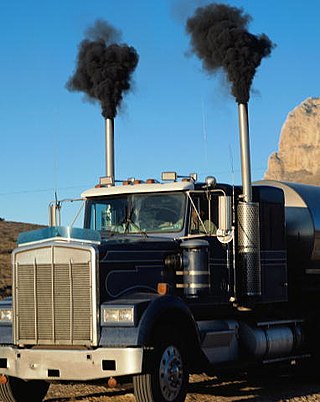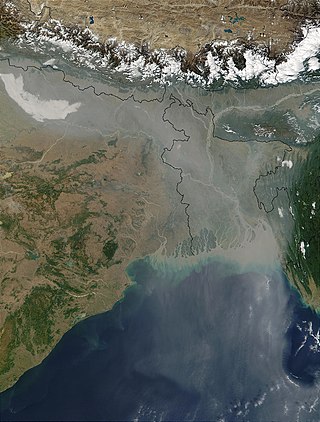Related Research Articles

Spectroscopy is the field of study that measures and interprets the electromagnetic spectra that result from the interaction between electromagnetic radiation and matter as a function of the wavelength or frequency of the radiation. In simpler terms, spectroscopy is the precise study of color as generalized from visible light to all bands of the electromagnetic spectrum.
Plasma diagnostics are a pool of methods, instruments, and experimental techniques used to measure properties of a plasma, such as plasma components' density, distribution function over energy (temperature), their spatial profiles and dynamics, which enable to derive plasma parameters.
The term biophotonics denotes a combination of biology and photonics, with photonics being the science and technology of generation, manipulation, and detection of photons, quantum units of light. Photonics is related to electronics and photons. Photons play a central role in information technologies, such as fiber optics, the way electrons do in electronics.
LII may refer to:

Soot is a mass of impure carbon particles resulting from the incomplete combustion of hydrocarbons. It is more properly restricted to the product of the gas-phase combustion process but is commonly extended to include the residual pyrolysed fuel particles such as coal, cenospheres, charred wood, and petroleum coke that may become airborne during pyrolysis and that are more properly identified as cokes or char.

Cloud condensation nuclei (CCNs), also known as cloud seeds, are small particles typically 0.2 µm, or one hundredth the size of a cloud droplet. CCNs are a unique subset of aerosols in the atmosphere on which water vapour condenses. This can affect the radiative properties of clouds and the overall atmosphere. Water requires a non-gaseous surface to make the transition from a vapour to a liquid; this process is called condensation.
Laser-induced fluorescence (LIF) or laser-stimulated fluorescence (LSF) is a spectroscopic method in which an atom or molecule is excited to a higher energy level by the absorption of laser light followed by spontaneous emission of light. It was first reported by Zare and coworkers in 1968.
Particle image velocimetry (PIV) is an optical method of flow visualization used in education and research. It is used to obtain instantaneous velocity measurements and related properties in fluids. The fluid is seeded with tracer particles which, for sufficiently small particles, are assumed to faithfully follow the flow dynamics. The fluid with entrained particles is illuminated so that particles are visible. The motion of the seeding particles is used to calculate speed and direction of the flow being studied.

Molecular tagging velocimetry (MTV) is a specific form of flow velocimetry, a technique for determining the velocity of currents in fluids such as air and water. In its simplest form, a single "write" laser beam is shot once through the sample space. Along its path an optically induced chemical process is initiated, resulting in the creation of a new chemical species or in changing the internal energy state of an existing one, so that the molecules struck by the laser beam can be distinguished from the rest of the fluid. Such molecules are said to be "tagged".
A particle counter is used for monitoring and diagnosing particle contamination within specific clean media, including air, water and chemicals. Particle counters are used in a variety of applications in support of clean manufacturing practices, industries include: electronic components and assemblies, pharmaceutical drug products and medical devices, and industrial technologies such as oil and gas.
Photophoresis denotes the phenomenon that small particles suspended in gas (aerosols) or liquids (hydrocolloids) start to migrate when illuminated by a sufficiently intense beam of light. The existence of this phenomenon is owed to a non-uniform distribution of temperature of an illuminated particle in a fluid medium. Separately from photophoresis, in a fluid mixture of different kinds of particles, the migration of some kinds of particles may be due to differences in their absorptions of thermal radiation and other thermal effects collectively known as thermophoresis. In laser photophoresis, particles migrate once they have a refractive index different from their surrounding medium. The migration of particles is usually possible when the laser is slightly or not focused. A particle with a higher refractive index compared to its surrounding molecule moves away from the light source due to momentum transfer from absorbed and scattered light photons. This is referred to as a radiation pressure force. This force depends on light intensity and particle size but has nothing to do with the surrounding medium. Just like in Crookes radiometer, light can heat up one side and gas molecules bounce from that surface with greater velocity, hence push the particle to the other side. Under certain conditions, with particles of diameter comparable to the wavelength of light, the phenomenon of a negative indirect photophoresis occurs, due to the unequal heat generation on the laser irradiation between the back and front sides of particles, this produces a temperature gradient in the medium around the particle such that molecules at the far side of the particle from the light source may get to heat up more, causing the particle to move towards the light source.

Planar laser-induced fluorescence (PLIF) is an optical diagnostic technique widely used for flow visualization and quantitative measurements. PLIF has been shown to be used for velocity, concentration, temperature and pressure measurements.
Turbulent diffusion is the transport of mass, heat, or momentum within a system due to random and chaotic time dependent motions. It occurs when turbulent fluid systems reach critical conditions in response to shear flow, which results from a combination of steep concentration gradients, density gradients, and high velocities. It occurs much more rapidly than molecular diffusion and is therefore extremely important for problems concerning mixing and transport in systems dealing with combustion, contaminants, dissolved oxygen, and solutions in industry. In these fields, turbulent diffusion acts as an excellent process for quickly reducing the concentrations of a species in a fluid or environment, in cases where this is needed for rapid mixing during processing, or rapid pollutant or contaminant reduction for safety.

Institute of Chemical Process Fundamentals, Academy of Sciences of the Czech Republic, v.v.i. is one of the six institutes belonging to the CAS chemical sciences section and is a research centre in a variety of fields such as chemistry, biochemistry, catalysis and environment.
The Sugden Award is an annual award for contributions to combustion research. The prize is awarded by the British Section of The Combustion Institute for the published paper with at least one British Section member as author, which makes the most significant contribution to combustion research. The prize is named after Sir Morris Sugden.

A luminous flame is a burning flame which is brightly visible. Much of its output is in the form of visible light, as well as heat or light in the non-visible wavelengths.
Liquid–feed flame spray pyrolysis (LF-FSP) is one of the most recent iterations in flame spray pyrolysis (FSP) powder production technology. FSP produces metal oxide powders from highly volatile gaseous metal chlorides that are decomposed/oxidized in hydrogen-oxygen flames to form nano-oxide powders. However, products made from FSP's vapor-phase process are limited to Al-, Ti-, Zr-, and Si-based oxides from their metal chlorides. Thus, interest in producing more complex materials required a new methodology, LF-FSP.

Aerosol mass spectrometry is the application of mass spectrometry to the analysis of the composition of aerosol particles. Aerosol particles are defined as solid and liquid particles suspended in a gas (air), with size range of 3 nm to 100 μm in diameter and are produced from natural and anthropogenic sources, through a variety of different processes that include wind-blown suspension and combustion of fossil fuels and biomass. Analysis of these particles is important owing to their major impacts on global climate change, visibility, regional air pollution and human health. Aerosols are very complex in structure, can contain thousands of different chemical compounds within a single particle, and need to be analysed for both size and chemical composition, in real-time or off-line applications.
Atmospheric lidar is a class of instruments that uses laser light to study atmospheric properties from the ground up to the top of the atmosphere. Such instruments have been used to study, among other, atmospheric gases, aerosols, clouds, and temperature.
Hope A. Michelsen is an American physical chemist and combustion scientist whose research involves the byproducts of combustion including soot, black carbon, greenhouse gases, the contribution of these substances to global warming, and the use of laser-induced incandescence to measure combustion products. She is an associate professor of mechanical engineering at the University of Colorado Boulder, in the Paul M. Rady Department of Mechanical Engineering.
References
- ↑ Michlsen, H. A.; Schulz, C.; Smallwood, G. J.; Will, S. (December 2015). "Laser-induced incandescence: Particulate diagnostics for combustion, atmospheric, and industrial applications". Progress in Energy and Combustion Science. 51: 2–48. doi: 10.1016/j.pecs.2015.07.001 .